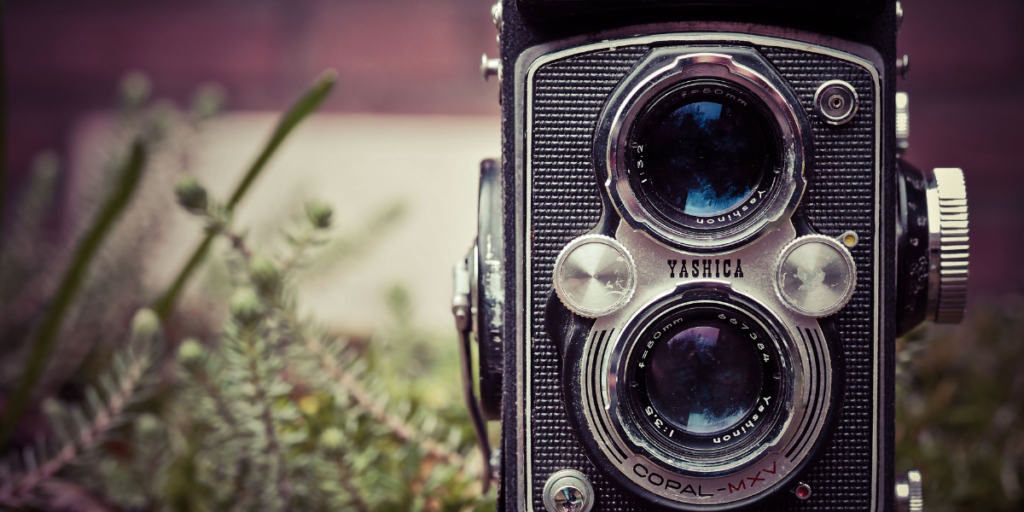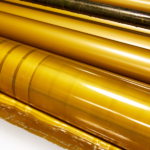Step back in time with us as we peel away the layers of history shrouded within a forgotten World War II bunker. Nestled deep in the heart of the landscape, this relic from a tumultuous past holds stories waiting to be told—stories captured through the vibrant lens of Kodak Ektar 100 film. Join us as we embark on an exploration that marries photography and history, revealing not just what remains behind concrete walls, but also the echoes of bravery and sacrifice that resonate through time. Get ready to uncover secrets, witness stunning visuals, and understand how every frame tells a tale worth remembering!
Introduction to the WWII Bunker and Its Significance
Nestled in the lush landscapes of Europe, remnants of history lie quietly beneath the surface, waiting to tell their stories. Among these relics is a WWII bunker that has become a haunting symbol of conflict and resilience. Captured through the lens of a Yashica LM 44 camera using Kodak Ektar 100 film, this image transcends mere documentation; it breathes life into moments that shaped our world.
As we delve deeper into this photograph, we uncover not just the story behind its capture but also explore what makes such historical sites crucial to our understanding of past events. Join us on an engaging journey through time as we unravel the significance of this WWII bunker and discover how photography plays an essential role in preserving our collective memory.
The Camera and Film Used for the Photo
The photograph capturing the WWII bunker was taken using a Yashica LM 44. This camera, known for its twin-lens reflex design, offers unique perspectives and sharp images.
Kodak Ektar 100 film played an essential role in this visual storytelling. It’s celebrated for its vivid colors and fine grain, making it ideal for capturing intricate details of historical sites.
The combination of the Yashica LM 44 and Kodak Ektar created a synergy that brought out the texture of the concrete walls and the atmosphere surrounding the bunker.
Every shot reveals not just history but also emotion—a moment frozen in time. The choice of film enhanced this experience, allowing viewers to connect with what lies beneath that weathered exterior.
With each click of the shutter, photographers transformed heavy history into vibrant imagery that resonates today.
The Story Behind the Photograph
The photograph captures a moment frozen in time, revealing the haunting remnants of a WWII bunker. It was taken on an overcast day, when shadows fell dramatically across its rugged surface. The atmosphere felt heavy with history.
As I stood before that concrete structure, imagination took flight. Stories of soldiers seeking shelter and strategizing battles echoed through my mind. Each crack and crevice seemed to whisper tales long forgotten.
This particular image was not just about the bunker; it represented resilience amid chaos. The juxtaposition of nature reclaiming its territory against human-made fortifications told another story—one of vulnerability.
The lens caught nuances often overlooked, like the interplay between light and shadow. Kodak Ektar 100 did justice to those subtle details, breathing life into every pixel while honoring memories etched in stone and soil.
Analysis of the Composition and Technical Aspects
The photograph of the WWII bunker is a masterclass in composition. The framing draws the viewer’s eye directly to the structure, highlighting its formidable presence against a backdrop of nature. The use of leading lines, created by paths and shadows, guides us into the scene.
Depth plays a crucial role here. Foreground elements add layers while maintaining focus on the bunker itself. This technique invites exploration within the image.
Kodak Ektar 100 film enhances colors beautifully, capturing rich greens and earthy tones with remarkable clarity. Fine grain brings out intricate details in both texture and structure.
Natural light bathes the bunker, casting dramatic shadows that evoke emotion. It tells stories without words—of resilience and history embedded in these walls.
Each technical choice reflects intent, making this photo not just an image but an artifact worthy of reflection.
The Impact of Kodak Ektar 100 on Film Photography
Kodak Ektar 100 has transformed the landscape of film photography since its introduction. Known for its vibrant colors and fine grain, this film offers photographers an exceptional range of tonal detail.
Users often praise it for capturing stunningly rich hues, making landscapes and portraits come alive. The dynamic color reproduction elevates images to a new level of clarity and brilliance.
Beyond aesthetics, Ektar 100 provides versatility across various lighting conditions. Photographers can experiment with different settings while still achieving impressive results.
The film’s ability to replicate natural tones without oversaturation appeals to both professionals and enthusiasts alike. It opens doors for creative expression, allowing users to explore avenues previously limited by other films.
For those seeking nostalgia combined with modern quality, Kodak Ektar 100 stands as a testament to the enduring spirit of analog photography in today’s digital world.
Historical Context of WWII Bunkers
World War II saw the construction of numerous bunkers across Europe and beyond. These structures were built to withstand bombings and invasions, serving as fortified shelters for soldiers and civilians alike.
Initially designed for tactical advantage, many bunkers became vital command centers. They housed weaponry, communication equipment, and supplies essential for prolonged warfare. The fortifications varied in complexity from simple dugouts to elaborate networks with multiple levels.
As the war progressed, these underground havens reflected a growing sense of desperation among nations facing imminent threats. They symbolized both safety and confinement—protecting those inside while isolating them from the outside world.
Today, these relics stand as haunting reminders of conflict’s harsh realities. Many have been preserved or repurposed to educate future generations about the war’s impact on society and landscape. Each bunker tells a story woven into the fabric of history that deserves to be remembered.
Preservation and Importance of Documenting History Through Photography
Photography serves as a powerful medium for capturing moments that define our history. Each photograph tells a story, preserving events and emotions for future generations to reflect upon.
Documenting history through imagery creates a bridge between the past and present. It allows us to understand the world as it once was, offering insights into cultural shifts and societal changes.
Preserving these visual narratives is crucial. They remind us of our shared experiences, triumphs, and tragedies. Every image carries the weight of its time—nudging us to remember what has come before.
In an era where digital records can fade or be lost in cyberspace, tangible photographs remain steadfast artifacts. They connect us deeply with our heritage while encouraging ongoing conversations about identity and legacy.
Photographers play an essential role in this preservation effort. Their keen eye transforms fleeting moments into enduring legacies that inspire curiosity and reflection long after they were captured.
Conclusion: Reflection on the Power of Visual Storytelling
Visual storytelling holds an incredible power to connect us with the past. The image of the WWII bunker captured on Kodak Ektar 100 serves as a poignant reminder of a time marked by conflict and resilience. Through this photograph, we glimpse the remnants of history frozen in time.
The story behind the image enriches our understanding, revealing not just what was seen through the lens but also what it represents—a narrative woven from countless experiences and emotions. Each detail tells a tale, each shadow hints at stories untold.
As we explore such photographs, we are invited into dialogues about preservation and memory. They challenge us to think about how history is documented and shared across generations. Every frame is more than just a record; it’s an invitation for reflection on human experience and endurance amid adversity.
This particular photo encapsulates these themes beautifully while showcasing how technology—like film photography using Kodak Ektar 100—can capture moments that resonate long after they were taken. In doing so, it preserves elements of our collective heritage that might otherwise fade away.
By engaging with images like these, we’re reminded that visual storytelling transcends mere aesthetics; it becomes a vital tool for education, empathy, and connection among people from different walks of life. It encourages us to remember where we’ve come from as we forge ahead into an ever-evolving future filled with new narratives waiting to be captured.






